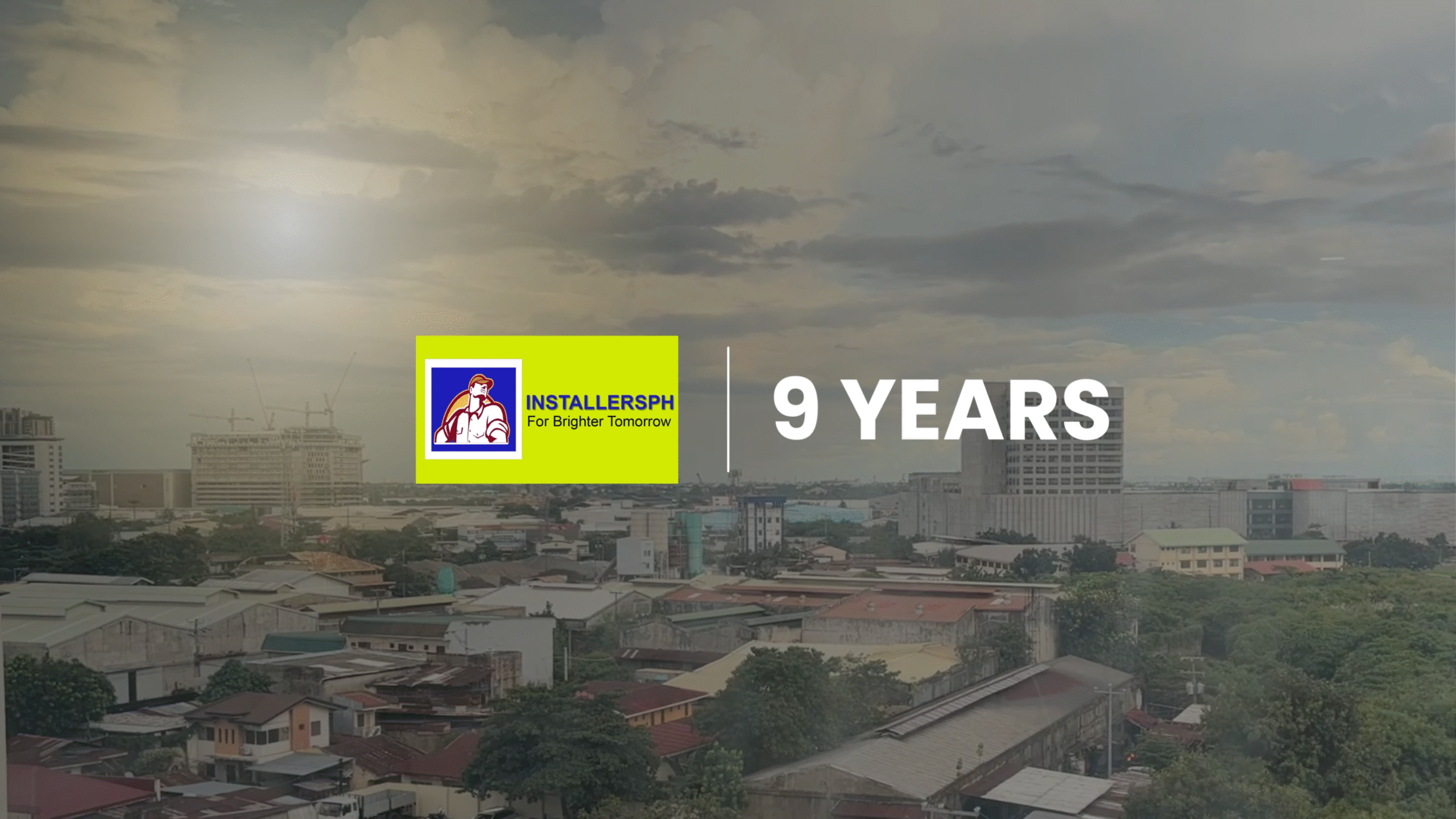InstallersPH IT Solutions 2026 AVP: A Brighter Tomorrow Built on Nine Years of Innovation and Dedication. Introduction. As InstallersPH IT Solutions proudly celebrates its ninth year of service in 2026, the company …
Leveraging Cloud Storage for CCTV Camera Footage: Benefits and Considerations.

Introduction
In the realm of security surveillance, the utilization of Closed-Circuit Television (CCTV) systems has become ubiquitous, serving as a cornerstone for safeguarding assets, deterring criminal activity, and enhancing situational awareness. As the volume of video data generated by CCTV cameras continues to grow exponentially, businesses, organizations, and homeowners are increasingly turning to cloud storage solutions to manage, store, and access their surveillance footage efficiently. This article delves into the multifaceted landscape of leveraging cloud storage for CCTV camera footage, exploring its myriad benefits, considerations, and best practices to empower users in making informed decisions regarding their security infrastructure.
Understanding Cloud Storage for CCTV Camera Footage
Cloud storage, in its essence, entails the storage of data on remote servers accessed via the internet, offering users the flexibility of storing and retrieving their files from any location with internet connectivity. In the context of CCTV camera footage, cloud storage represents a paradigm shift from traditional on-premises storage solutions, offering enhanced scalability, accessibility, and cost-effectiveness.
Benefits of Leveraging Cloud Storage for CCTV Camera Footage
1. Enhanced Security
Security remains a paramount concern for any surveillance infrastructure, and cloud storage solutions offer robust security features to safeguard CCTV camera footage from unauthorized access, tampering, and data breaches. By employing advanced encryption algorithms, multi-factor authentication mechanisms, and strict access controls, cloud storage providers ensure the confidentiality, integrity, and availability of video data, bolstering overall security posture.
2. Scalability
One of the inherent advantages of cloud storage is its unparalleled scalability, allowing users to scale their storage infrastructure dynamically in response to evolving surveillance requirements. Whether accommodating additional cameras, extending retention periods, or adapting to fluctuating storage demands, cloud-based solutions offer the flexibility to scale resources seamlessly without the need for upfront investments in hardware infrastructure.
3. Accessibility
Cloud storage enables ubiquitous access to CCTV camera footage, empowering users to monitor their premises, review archived recordings, and respond to security incidents in real-time from any internet-enabled device. Whether accessing footage remotely via desktop browsers, mobile applications, or dedicated surveillance platforms, users can leverage cloud storage to enhance situational awareness, collaboration, and incident response capabilities.
4. Redundancy and Reliability
Cloud storage providers implement redundant infrastructure, data replication mechanisms, and geographically dispersed data centers to ensure high availability, fault tolerance, and data durability. By distributing data across multiple servers and geographic locations, cloud-based solutions mitigate the risk of data loss due to hardware failures, natural disasters, or network outages, thereby enhancing reliability and resilience.
5. Cost-Effectiveness
Cloud storage offers a compelling economic proposition by eliminating the need for upfront capital expenditures associated with traditional on-premises storage solutions. With pay-as-you-go pricing models, metered billing, and flexible subscription plans, users can optimize storage expenses based on actual usage patterns, achieving cost savings, and operational efficiency without compromising performance or scalability.
Considerations for Leveraging Cloud Storage for CCTV Camera Footage
1. Bandwidth and Internet Connectivity
Effective utilization of cloud storage for CCTV camera footage hinges upon reliable internet connectivity and sufficient bandwidth to facilitate the seamless upload and retrieval of large video files. Users must assess their network infrastructure’s capacity to accommodate the bandwidth requirements of streaming live video feeds, transferring recorded footage, and accessing archived recordings without compromising network performance or experiencing latency issues.
2. Data Privacy and Compliance
With the proliferation of data privacy regulations, such as the General Data Protection Regulation (GDPR), the California Consumer Privacy Act (CCPA), and the Health Insurance Portability and Accountability Act (HIPAA), ensuring compliance with regulatory requirements is paramount when storing sensitive CCTV camera footage in the cloud. Users must select reputable cloud storage providers with robust privacy policies, data encryption capabilities, and adherence to industry standards to safeguard data privacy, integrity, and regulatory compliance.
3. Retention Policies and Legal Requirements
Establishing clear retention policies and adhering to legal requirements governing CCTV camera footage retention is essential to mitigate potential liabilities, regulatory penalties, and compliance risks. Users must define retention periods based on operational needs, industry regulations, legal obligations, and statute of limitations, ensuring adherence to data retention laws, privacy statutes, and evidentiary requirements governing video surveillance data.
4. Data Sovereignty and Jurisdictional Issues
Users operating in multiple jurisdictions must navigate complex legal, regulatory, and jurisdictional considerations when storing CCTV camera footage in the cloud. Understanding data sovereignty, cross-border data transfers, and international data protection laws is essential to mitigate the risk of regulatory non-compliance, legal disputes, and jurisdictional conflicts. Users must select cloud storage providers with geographically dispersed data centers, regional availability zones, and adherence to global data protection regulations to address data sovereignty concerns and ensure regulatory compliance across geographical boundaries.
5. Integration with Existing Infrastructure
Seamless integration with existing CCTV camera systems, video management software (VMS), security protocols, and third-party applications is crucial for optimizing the efficiency, interoperability, and effectiveness of cloud storage deployments. Compatibility with industry-standard protocols, application programming interfaces (APIs), and software development kits (SDKs) facilitates data exchange, interoperability, and integration between disparate systems, enabling centralized management, unified monitoring, and streamlined operations.
Best Practices for Leveraging Cloud Storage for CCTV Camera Footage
- Conduct a comprehensive risk assessment to identify security vulnerabilities, privacy risks, compliance requirements, and operational challenges associated with storing CCTV camera footage in the cloud.
2. Evaluate the reliability, scalability, performance, security, and compliance capabilities of cloud storage providers through rigorous due diligence, vendor assessments, and third-party audits.
3. Implement robust access controls, encryption mechanisms, and authentication protocols to safeguard CCTV camera footage from unauthorized access, data breaches, and cyber threats.
4. Define clear retention policies, data lifecycle management strategies, and archival procedures to govern CCTV camera footage retention, deletion, and disposition in accordance with legal, regulatory, and operational requirements.
5. Implement network segmentation, traffic prioritization, and Quality of Service (QoS) policies to optimize bandwidth utilization, minimize latency, and prioritize video traffic for seamless transmission and retrieval of CCTV camera footage.
6. Leverage cloud-native analytics, artificial intelligence (AI), and machine learning (ML) capabilities to derive actionable insights, automate video analysis, and enhance threat detection, anomaly detection, and behavioral analytics in surveillance environments.
7. Establish contingency plans, disaster recovery measures, and business continuity strategies to mitigate the risk of data loss, service disruptions, and infrastructure failures, ensuring uninterrupted access to critical CCTV camera footage in emergency situations.
Conclusion
Cloud storage represents a paradigm shift in the way organizations, businesses, and homeowners manage, store, and access CCTV camera footage, offering unparalleled scalability, accessibility, security, and cost-effectiveness. However, leveraging cloud storage for surveillance purposes entails a myriad of considerations, including bandwidth constraints, data privacy, legal requirements, jurisdictional issues, and integration challenges. By adopting a strategic approach, adhering to best practices, and partnering with reputable cloud storage providers, users can harness the power of cloud technology to optimize their surveillance infrastructure, enhance security posture, and mitigate risks in an increasingly digital and interconnected world.
Related Articles
How to Properly Conduct CCTV Preventive Maintenance Service (PMS). Introduction. CCTV systems play a crucial role in maintaining safety and security within properties, businesses, and institutions. However, even the most advanced surveillance …
Celebrating the Birthday of our Sales Executive, Ms. Diornelyn Subico. Introduction. Today, we take a special moment to celebrate the birthday of our dedicated and well-loved Sales Executive, Ms. Diornelyn Subico. As …


